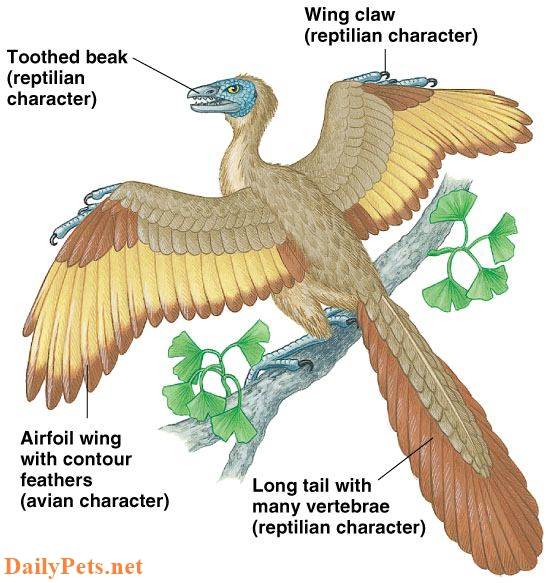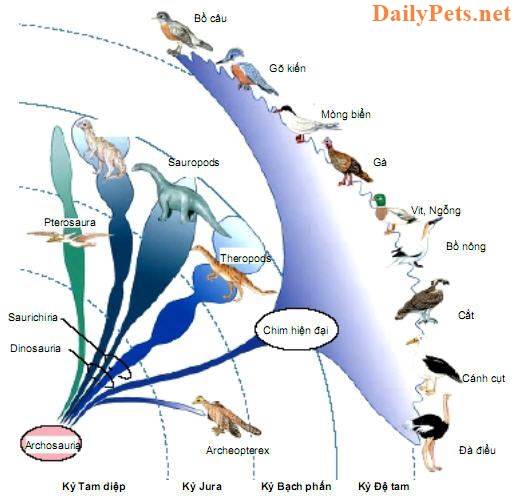The origin and evolution of birds (Aves) is a fascinating and complex topic in the field of paleontology and evolutionary biology.
Birds are a group of warm-blooded, feathered vertebrates characterized by their ability to fly. The current understanding of bird evolution is based on a combination of fossil evidence, comparative anatomy, genetics, and molecular biology.
The origin of birds
The ancient bird fossil – Archaeopteryx was found in the rock layers of the Jurassic period in Europe about 150 million years ago. They already had bird-like characteristics such as feathered bodies, front limbs evolved into wings, dagger-shaped tail bones, fused tail bones forming a V-shape, and a bird-like pelvis and hip structure.

The ancient birds didn’t have the ability to fly truly; they could only glide from one branch to another or climb trees. They also had many reptilian characteristics, such as solid bones, a long tail with multiple vertebrae, unfused thoracic vertebrae, an un-fused wishbone, a backward-curving skull, tail feathers growing on both sides of the spine, and a long tail.
The common ancestors of birds and giant lizards (Dinosauria) both originated from a group of ancient reptiles (Archosaura). However, the direct ancestor of birds from the lizard group hasn’t been determined. Ancient reptiles lived in trees and initially only climbed and jumped from one branch to another. Then, their scales evolved to form wing membranes. The scales developed on the forelimbs and tail, elongated, and widened to form bird feathers.
The evolutionary development of birds
By 1952, paleontologists had discovered 780 species of fossilized birds, among which the most primitive group, known as the “fan-tailed birds,” was found in the strata of the Cretaceous period. However, compared to the Archaeopteryx, this group of birds from the Cretaceous period still exhibited many characteristics of modern birds. Researchers observed that the Cretaceous birds diverged into two distinct groups, each adapted to different environments:
- The group of water birds (Hesperornithes): Includes species of birds lacking wings, unfused wishbone, and underdeveloped shoulder blades, with all four digits of the hindlimbs pointing forward.
- The group of flying birds (Ichthyornithes): Comprises species of birds with wings and well-developed wishbones similar to modern birds.
Both of these bird groups are modern birds, but they still retain primitive characteristics such as having many teeth in their jawbones, a reptilian-like jaw joint, and a relatively small brain size. All birds from the Cretaceous period are classified under the superorder Odontornithes (Birds with teeth).
During the early Cretaceous period, bird diversity flourished and can be divided into three main directions:
- Running birds: This is the most primitive direction, and by the end of the Cretaceous period and the beginning of the early Cenozoic, evidence of running birds appeared. Aepyornis and Dinornis are examples of such birds, which resemble modern-day ostriches.
- Swimming birds: The formation of the penguin group occurred during this time, which included birds like modern penguins. These birds were unable to fly but used their wings for swimming, leading to the development of their wishbones.
- Flying birds: The remaining group of birds continued to develop and diversify. By the end of the Cretaceous period, this group had become quite abundant, and during the early Cenozoic, they already had representatives similar to today’s birds.
Throughout this period, bird evolution saw various adaptations and specializations, resulting in the diverse avian species we have today.










